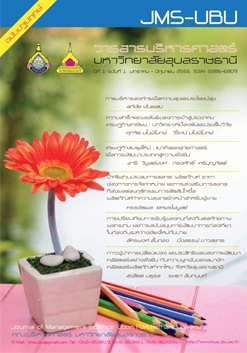The Factors of Marketing Mix: Product, Price, Place and Promotion toward Buying Behavior Decision Making of Cleansing Face Products for Men
Main Article Content
Abstract
The purpose of this study were measured the factors of demographic (age education and income) and the factors of marketing mix (product, price, place and promotion) toward buyer behavior decision making of cleansing face products for men. The sampling was obtained through the process of convenience sampling of 400 samples by purposive sampling of men experienced who have been brought cleansing face products for men more than one year. The data analyses included percentage, mean, and 34 standard deviation and inferential statistics Pearson’s Chi-square to test hypothesis. This study used the Cronbach alpha coefficient to measure reliability and found reliability 0.860 of pilot study.
The results of this study found the demographic factors toward buyer behavior decision making of cleansing face products for men at significant level less than 0.05 were planning and intend to buy product, regular buying product, buying area, and product size selection. Marketing mix factors toward buyer behavior decision making of cleansing face products for men at significant level less than 0.05 were main reason to buy product and run out of product which brand will be used.
Downloads
Article Details
References
ศิริสุภา ยิ่งเจริญ (2549). ผู้ผลิตและจำหน่ายผลิตภัณฑ์ทรอส. สยามธุรกิจ, ฉบับที่ 790 ประจำวันที่ 5-8 พฤษภาคม
ไอยลดา มี้เจริญ. (2544). ทัศนคติของผู้บริโภคที่มีต่อโฟมล้างหน้. การศึกษาค้นคว้าอิสระปริญญาบริหารธุรกิจ
มหาบัณฑิต มหาวิทยาลัยหอการค้าไทย
อรรถสิทธิ์ เหมือนมาตย์ (2547, พฤศจิกายน). เปิดศึกเครื่องสำอางผู้ชาย วัดกึ๋น กลยุทธ์พิชิตใจหนุ่ม. Positionning
Magazine, ค้นเมื่อ 8 ธันวาคม 2554, จาก http://www.positioningmag.com/magazine/details
aspx?id=27379
Bennett, A. R. (1997). The five vs - A buyer’s perspective of marketing mix. Marketing Intelligence &
Planning, 15(3), 151-156.
Borden’s, N. H. (1965). The concept of the marketing mix. In Schwartz, G. (Ed.), Science in Marketing. New
York: John Wiley &Sons, 386-397.
Courtland L. A. Bovee & William F. (1992). Contemporary advertising. Richard D. Irwin, Inc.
Frey, A. W. (1961). Advertising (3rd ed.). New York: The Ronald Press.
Kotler, P. (1984). Marketing management: Analysis, planning and control (5th ed.). New Jersey: Prentice-
Hall Inc.
Kotler, P. (2003). Marketing management. (11th ed.). New Jersey: Prentice-Hall Inc.
Kotler, P. & Keller, L. K. (2009). Marketing management. (13th ed.). Pearson Prentice Hall: Pearson
Education International.
Kotler, P. & Keller, L. K. (2012). Marketing management. (14th ed.). Pearson Prentice Hall: Pearson
Education International.
McCarthy, E. J. (1964). Basic marketing, IL: Richard D. Irwin.
Mickwitz, G. (1959). Marketing and competition. Finland: Societas Scientarium Fennica, Helsingfors.
Retail Index Nielsen, Retrieved Sep, 2010, from www.scribd.com/doc/30924999/Facing-Fascism.
Schiffman L. G. & Kanuk, L. L. (2000). Consumer behavior (7th ed.). Englewood Cliffs, New Jersey Prentice
Hall.
Palmer, A. (2004). Introduction to marketing – theory and practice, UK: Oxford University Press.
Yamane, T. (1967). Statistics: An Introductory Analysis. (2nd ed.). New York: Harper and Row.
Yudelson, J. (1999). Adapting McCarthy’s four P’s for the twenty-first century. Journal of Marketing
Education, 21(1), 60.
